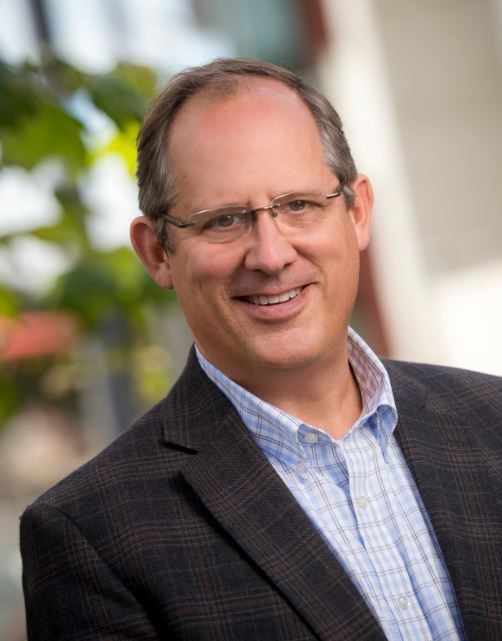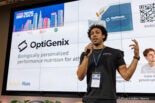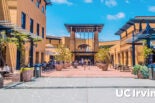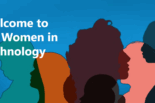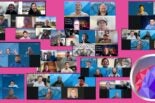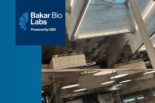By Angela Cummings, Marketing Communications Lead, Information Technology Services, UC San Diego.
What attracted you to UC?
First and foremost, it was the people I met when I visited campus. The university feels young and energetic, entrepreneurial and agile.
Tell us more about your “adventurous” career path – and what led you to become a CIO?
I fell in love with computing in my senior year in college. I was editor of the student newspaper and convinced the administration to upgrade our production equipment to use computing. Academically, I started out as a studio art major and switched to communications and journalism. I worked as a journalist for a couple years while I went part-time for a sixth year of undergraduate study in computer science. After a couple of years in retail management, I transitioned to a business systems analyst role for Unocal Corp. From there I went on to consulting and eventually became a partner and co-owner of a data warehousing and analytics consulting firm.
Then the Internet happened. Our firm, at the time, naively thought that connecting Internet users to data through data-driven web sites was a good idea. That thought turned out to be correct as the Internet quickly shifted from a simpler publishing platform to one driven by data and analytics. Our firm was acquired by one of the large Internet consulting firms of the late 1990s. I then transitioned into business and IT strategy consulting.
Along the way I had developed a relationship with the then president of DePaul University who had a great vision for what higher education needed to be in the future. When the opportunity to switch to the CIO role in higher education became available, I made the transition. For me, it wasn’t too difficult. I had been teaching as an appointed instructor and an adjunct since 1998 in DePaul University’s professional and graduate programs in information systems and computer science, and had worked with Dr. Susy Chan on developing one of the first e-commerce degree programs in the country. Later, I trained under Dr. Susy Chan for my Ph.D. in human-computer interaction (HCI).
How do you envision your role as CIO at your campus?
This is a great university and UC is a great system, simply world class. My role is to help the university take full advantage of what information technology can bring to its education, research, healthcare, and service missions. In a way, I help integrate humans with information technology in the social, psychological, business, financial, and technical dimensions of this task. Humankind has only been using information technology for about a generation. We have much more to learn about how IT intertwines with our lives, our organizations, and how it will shape our futures. My role is to do my part to help guide that process.
You’ve been at UC San Diego for just over six months now–where do you intend to focus attention first?
Multi-linear simultaneity – everything at once! Kidding aside, although at times that is what our community needs. To make progress we have to focus. The first place to look is the UCSD strategic plan, which calls out student success as a top priority. A big part of my CIO life in higher education has been bringing innovative solutions forward in this realm and we are focusing on that. In addition, we have to continue to adopt best practices in enterprise software and to modernize our enterprise software platforms.
And finally, researchers continue to adopt all sorts of IT in their research programs. Digitization and big data continue to grow exponentially. We need to identify solutions to deal with the growth of data and we have to help our researchers in the rapid growth in complexity both in their own research programs and in many of the IT solutions they can use in their research.
How do you think IT needs to evolve in order to better support the UC mission?
As each year goes by, IT gets more complex, more nuanced, more surprising. It’s not so much how should IT evolve, but how should our organizations evolve to take full advantage of IT while maintaining our sense of self and our communities. IT has to be humanizing, illuminating and helpful, not the reverse.
How can the CIOs collaborate to collectively build strengths and capabilities across the UC system?
By sharing our practices and encouraging bottom-up collaboration we can invent systemwide solutions that deliver excellent benefits at a fraction of typical costs. Universities are the land of complex operations, necessarily and appropriately driven by the diversity of our academic programs, the multiple pedagogical methods in use, and the range and complexity of our research programs. Bottom-up collaborations are a great way to manage this complexity.
What challenges – and opportunities – do you see for IT in higher education?
The biggest challenge to higher education is to use IT to help improve our outcomes while improving our cost-effectiveness, all in a “complex operation versus a volume operations” business. Technology automation works great in improving efficiency in volume operations businesses, but for it to work well in complex operations and higher education, we have to integrate IT with human processes and human thought in nuanced ways. This is the next frontier for IT in all businesses, how to use IT and analytics to improve what we do in complex activities. Higher education is one industry that is likely to be pushing the boundaries here.
Outside of work, what other interests are you passionate about?
I am passionate about my kids and family, hiking, and reading about two topics right now: ancient Roman history and the complexity sciences. I like to study the old to understand the new and vice versa.
Photo credit: UC San Diego Publications – Erik Jepsen

